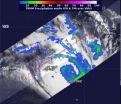Heart attack research discovers new treatment target
2014-02-11
(Press-News.org) New Orleans, LA – Research led by David Lefer, PhD, Professor and Director of the Cardiovascular Center of Excellence at LSU Health Sciences Center New Orleans School of Medicine, demonstrates for the first time cross-talk between two protective signaling molecules during a heart attack. By providing new and important information about the mechanisms involved in heart attacks and organ transplantation, the research identifies a potential new treatment target for heart disease. The paper will be published in Proceedings of the National Academy of Sciences (PNAS) Online Early Edition the week of February 10, 2014.
Previous studies found that hydrogen sulfide protects cells from damage caused by a number of diseases, including cardiovascular, in a similar manner to that reported for another protective gas, nitric oxide. Though hydrogen sulfide and nitric oxide are biologically similar, it was thought that they protected cells via distinctly different mechanisms. The LSUHSC research team found that instead, they interact and "talk" to each other, and it is this interaction that produces the protective effect during heart attacks.
"We found that hydrogen sulfide regulates the body's production of nitric oxide which, in turn, protects the heart muscle against cell death," notes Dr. Lefer.
Working in a mouse model, the researchers discovered the interdependence between the two molecules. When an enzyme that produces hydrogen sulfide was absent, they found that the production and action of nitric oxide were greatly reduced, resulting in increased oxidative stress and more severe injury to the heart and liver from blocked blood flow as well as from the eventual restoration of blood flow.
"This study has far reaching implications for the development of novel treatments for cardiovascular disease," concludes Dr. Lefer.
Although progress has been made, heart disease remains the leading cause of death in the United States. According to the American Heart Association, approximately every 34 seconds, 1 American has a coronary event, and approximately every 1 minute 23 seconds, an American will die of one.
INFORMATION:
In addition to Dr. Lefer, the LSU Health research team from the Cardiovascular Center of Excellence and the Department of Pharmacology also included David Polhemus, Shashi Bushan, Hiroyuki Otsuka, Jessica M. Bradley, and Kazi N. Islam. Researchers from Emory University School of Medicine, Auburn University College of Veterinary Medicine, LSU Health Sciences Center Shreveport, the University of Pittsburgh, Temple University, Massachusetts General Hospital, and Lakehead University in Canada also participated.
The research was supported by the National Heart, Lung, and Blood Institute, the Canadian Institutes of Health Research, and the Carlyle Fraser Heart Center at Emory University Hospital.
LSU Health Sciences Center New Orleans educates Louisiana's health care professionals. The state's university health leader, LSUHSC includes a School of Medicine, the state's only School of Dentistry, Louisiana's only public School of Public Health, and Schools of Allied Health Professions, Nursing, and Graduate Studies. LSUHSC faculty take care of patients in public and private hospitals and clinics throughout the region. In the vanguard of biosciences research in a number of areas in a worldwide arena, the LSUHSC research enterprise generates jobs and enormous economic impact. LSUHSC faculty have made lifesaving discoveries and continue to work to prevent, advance treatment, or cure disease. To learn more, visit http://www.lsuhsc.edu and http://www.twitter.com/LSUHSCHealth.
ELSE PRESS RELEASES FROM THIS DATE:
Point-of-care ultrasound for suspected appendicitis in kids proves accurate
2014-02-11
New York, NY – Using portable ultrasound as a first-line imaging study in kids with suspected appendicitis helps reduce emergency room length of stay and reduces the need for CT scans, according to a team of Mount Sinai researchers. Bedside ultrasound, often referred to as point-of-care ultrasonography, has a specificity of about 94%, meaning that it misses few cases, , the Mt. Sinai researchers add. Results from the study are published online February 10 in the peer-reviewed journal Academic Emergency Medicine.
"From an institutional perspective, this is the most common ...
ASTRO and SSO issue consensus guideline on margins for breast-conserving surgery with WBI
2014-02-11
Fairfax, Va., February 10, 2014 – The American Society for Radiation Oncology (ASTRO) and the Society of Surgical Oncology (SSO) are pleased to announce the publication of the consensus guideline on margins for breast-conserving surgery with whole-breast irradiation in stages I and II invasive breast cancer. The guideline document represents an intensive collaboration among experts in the radiation oncology and surgical oncology fields, led by Meena S. Moran, MD, associate professor of the Department of Therapeutic Radiology at Yale School of Medicine in New Haven, Conn., ...
Maps show expected redistribution of global species due to climate change
2014-02-11
As climate change unfolds over the next century, plants and animals will need to adapt or shift locations to follow their ideal climate. A new study provides an innovative global map of where species are likely to succeed or fail in keeping up with a changing climate. The findings appear in the science journal Nature.
As part of a UC Santa Barbara National Center for Ecological Analysis and Synthesis (NCEAS) working group, 18 international researchers analyzed 50 years of sea surface and land temperature data (1960-2009). They also projected temperature changes under ...
Obese children more likely to have complex elbow fractures and further complications
2014-02-11
ROSEMONT, Ill.─Pediatric obesity is currently an epidemic, with the prevalence having quadruped over the last 25 years. Children diagnosed with obesity can be at risk for various long-term health issues and may be putting their musculoskeletal system at risk. According to new research in the February issue of the Journal of Bone and Joint Surgery (JBJS), obese children who sustain a supracondylar humeral (above the elbow) fracture can be expected to have more complex fractures and experience more postoperative complications than children of a normal weight.
"These ...
Giant mass extinction may have been quicker than previously thought
2014-02-11
The largest mass extinction in the history of animal life occurred some 252 million years ago, wiping out more than 96 percent of marine species and 70 percent of life on land — including the largest insects known to have inhabited the Earth. Multiple theories have aimed to explain the cause of what's now known as the end-Permian extinction, including an asteroid impact, massive volcanic eruptions, or a cataclysmic cascade of environmental events. But pinpointing the cause of the extinction requires better measurements of how long the extinction period lasted.
Now researchers ...
High pollutant levels in Guánica Bay 'represent serious toxic threat' to corals
2014-02-11
The pollutants measured in the sediments of Guánica Bay, Puerto Rico, in a new NOAA study were among the highest concentrations of PCBs, chlordane, chromium and nickel ever measured in the history of NOAA's National Status & Trends, a nationwide contaminant monitoring program that began in 1986.
Researchers from the National Ocean Service's National Centers for Coastal Ocean Science (NCCOS) studied the reef's ecology to help establish baseline conditions that coastal managers can use to measure changes resulting from new efforts to manage pollution. Among the items studied ...
Design prototype chip makes possible a fully implantable cochlear implant
2014-02-11
BOSTON (Feb. 10, 2014) — Researchers from Massachusetts Eye and Ear, Harvard Medical School, and Massachusetts Institute of Technology (MIT) have designed a prototype system-on-chip (SoC) that could make possible a fully implanted cochlear implant. They will present their findings on Feb. 11at the IEEE International Solid State Circuits Conference in San Francisco.
A cochlear implant is a device that electronically stimulates the auditory nerve to restore hearing in people with profound hearing loss. Conventional cochlear implants are made up of an external unit with ...
NASA's TRMM satellite eyes rainfall in Tropical Cyclone Fobane
2014-02-11
Some towering thunderstorms were spotted in Tropical Cyclone Fobane as NASA's TRMM satellite passed over the Southern Indian Ocean on February 10. Fobane was formerly Tropical Cyclone 14S and when it strengthened into a tropical storm it was renamed.
NASA and the Japan Aerospace Exploration Agency manages the Tropical Rainfall Measuring Mission satellite known as TRMM. TRMM has the capability to measure rainfall rates from space and data that can be used to determine the heights of thunderstorms that make up a storm. When TRMM passed over Tropical Cyclone Fobane on February ...
Cars, computers, TVs spark obesity in developing countries
2014-02-11
The spread of obesity and type-2 diabetes could become epidemic in low-income countries, as more individuals are able to own higher priced items such as TVs, computers and cars. The findings of an international study, led by Simon Fraser University health sciences professor Scott Lear, are published today in the Canadian Medical Association Journal.
Lear headed an international research team that analyzed data on more than 150,000 adults from 17 countries, ranging from high and middle income to low-income nations.
Researchers, who questioned participants about ownership ...
Recycling of 'chauffeur protein' helps regulate fat production
2014-02-11
Studying a cycle of protein interactions needed to make fat, Johns Hopkins researchers say they have discovered a biological switch that regulates a protein that causes fatty liver disease in mice. Their findings, they report, may help develop drugs to decrease excessive fat production and its associated conditions in people, including fatty liver disease and diabetes.
A summary of the research appeared online on Jan. 29 in the Journal of Biological Chemistry.
"We've learned how the body finely tunes levels of a protein called SCAP that is required to turn on fat production ...


